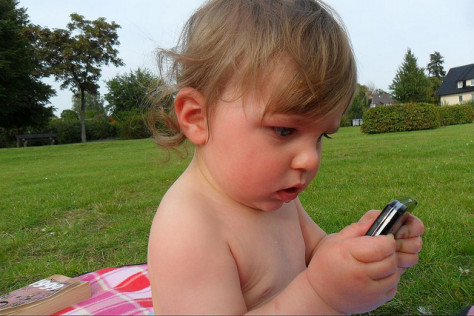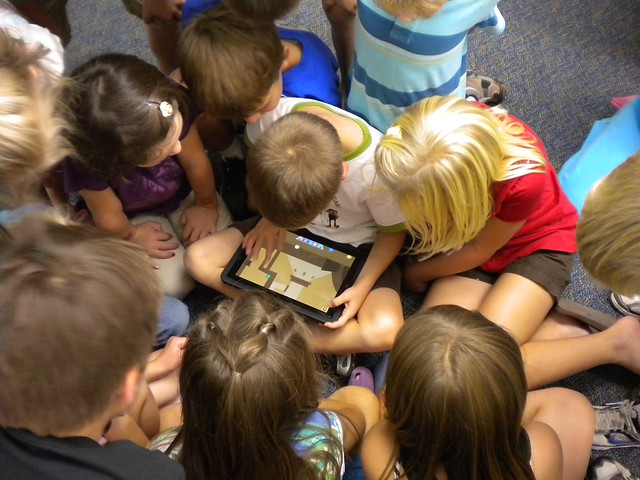1. Compare and Contrast each documentary. What was similar or different from the first one Digital Nation filmed in 2010 to Generation Like filmed in 2014 ?
Generation Like - This video was mostly about how kids these days want people to like them for who they are (online) and what their interests are. When taking pictures of themselves they made sure that they were perfect before posting so they would gain more likes. With social media now the numbers are there for everyone to see. I thought it was interesting that the girl who liked the Hunger Games spent all of her time and energy posting pics, re-tweeting, # stars names in her posts. She said that she felt empowered when one of them retweeted her post, having that happen made her feel important and thought that others would follow her because if the star thought she was important enough then others should too.
Distracted by Everything - This video was mostly about students trying to multitask. In class they couldn’t multitask because they were distracted by other things going on also because they can really only think about one thing at a time. At Stanford University they ran tests on 6 people to see if they can multitask by taking a test that makes your brain switch quickly from one task to another. Dr. Gary Small at UCLA showed us two scans of a brain, one was reading a book and the other was reading online. The one reading a book showed less red than the one online. He said even though there is more that doesn’t mean its better. Your brain is trained to read a book that you hold in your hand so it knows what to do, where as when you’re online and reading there’s more going on than just a blank page with words on it. There are advertisements, pictures, captions, bold letter, titles, and lots of colors. It takes our brain longer to process that information than it does within a book.
2. Your thoughts on multitasking. Do you agree? Can you multitask? Do you disagree with the video on the topic of multitasking? What do you think our students think about multitasking today?
Generation Like - In generation like they didn’t really talk a lot about multitasking per say, but the group of kids that were sitting at the table remaking one of their friends profiles seemed like they were going back and forth from page to page pretty easily and without much thought. Clearly there wasn’t a brain scan to go against to see the differences but there was a noticeable difference on how they could be doing something and still answer a question about a different subject.
Distracted by Everything - Spoke a lot about multitasking and how college students who thought they were really good at multitasking were actually not good at all and they were slower than normal. I thought that it was disturbing that students at Stanford University, in a large lecture class were sitting on facebook, chatting, and not paying attention. I think that at the college level students should be taking their education seriously and not wasting their parents money. Going back to the brain imaging, I found the difference between a brain reading a book and a brain reading on the internet extremely interesting. Also that just because there was more activity during the time on the internet, didn’t necessarily mean that it was better. The brain that was reading was had the training it needed to be able to do it with ease.
3. Is there an addiction happening in society today with technology or is it just a new way of living? Should we be concerned?
Generation Like - I definitely think that there is an addiction with social media sites that affect kids along with adults. They all want to be accepted for who they are and on Facebook, Instagram and Twitter. Everything is shown in black and white how many people see what they are doing, how many people like their posts and how many more followers they can get as they continue to post photos, videos and anything else that others have in common with them.
Distracted by Everything - I was a bit shocked to know that they have a camp to help people with their addiction to social media. There was a story about a teenage boy in South Korea that spent so much time on the internet he was unable to have a conversation with his mother. She sent him to the camp and he said that he didn’t think he would change because nor using a computer for 10 days was the hardest thing he had to do. Professionals at the camp also stated that because of this addiction they have treated some medical conditions such as eye strain and ear complications.
4. Do video games serve a purpose in education or are they a waste of time?
Distracted by Everything - In this video, they used video games in a classroom and those students thrived with it. They knew more and learned quicker than the teachers. In my school we have iReady testing that is focused on English and Math, the whole test is done on a laptop and the more questions a student gets right the harder they get. In between a series of questions is a game they can play to give their brain a break. Most of the students that I work with that have IEPs enjoy the games and the break. In my opinion video games that do serve a purpose should be allowed in classrooms but a little at a time. I will be working with 2nd graders and although technology is great for them to learn they still need to be using a pencil and paper, they need to hold a book in their hand, they need to do math facts with regrouping on a whiteboard. Even though video games are fun and can serve an educational purpose students still need structure in the classroom.
5. How did what you watched in the two videos support your feelings about technology or how did it change your views?
I use Facebook, Twitter, Instagram and Pinterest on a daily basis. I knew that marketing companies tracked what you liked on those pages and would send you more advertisements for the things you like, what I didn’t know was that they were using that information to track your every move. They compile all the likes and turn it into a franchise. Tyler Oakley, was very interesting to me. When they said that once he became “famous,” he began to do videos with a guest to get that person more likes and followers, then that guest brought someone new in and so on and so on. This to me was epic. I liked that kids have their own way to express themselves and they should be able to do it, but at the same time they definitely need to have digital etiquette while doing so.
6. Are kids and adults today ruining their digital footprints by sharing too much information online without realizing that it may be detrimental to their future? Should they care? Are they focused on too much of what others think?
I like that everyone out there is expressing themselves but as I watched the Generation Like video all I could think about what the Digital Dossier video which still haunts me. Even though these kids think that it is fine to put everything and anything out there I still believe that it is not completely safe to do so. The more information that you put out there the more the internet learns about you, what you like, who you hang out with, and what things you do in your free time. Personally, when I did my own digital footprint I was shocked at how many things I listed that I use, some on a daily basis, and started to think about who could find information about me. I googled myself and didn’t like that my previous addresses were listed. It really makes me want to delete everything that I have done on any social media site.
7. What do you feel are the dangers of technology use? Are there any?
I think the biggest danger is cyber-bullying. Cyber-bullying has turned into parents biggest nightmare. I read more about cyber-bullying and adolescent girls are just as likely, if not more likely than boys to experience cyber-bullying either as a victim or an offender. It is related to low self-esteem, suicidal thoughts, anger, frustration and a variety of other emotional and psychological problems. It affects kids all around the world. even though traditional bullying is more common cyber-bullying is still a real issue that needs to be dealt with at school or home.
Please add anything else you feel would explain your views about the videos and how they relate to educational technology or your personal lives.
What was your favorite part of either video? Why? Most interesting?
My most favorite part of these two videos was the story of Bubbe and her grandson. I thought it was absolutely adorable that they made short videos of her cooking the recipe of the day. He did all the technical part and she did all the teaching. I liked that she answered emails of fans that watch their channel. It was a really cute and special bond that they have together.
Another thing that I liked was when they were talking about the arm men flying drones form 75,000 miles away. The drones are used to strike at a target with no risk to military personnel and they are extremely precise. It stated that being at war no longer has the same meaning as it did back in day. They can wake up in the morning in their own bed next to the significant other, go to work/war and be back at the end of the day to have dinner with their family. Having this luxury is good but at the same time a lot of soldiers suffer from trying to make their brain go back and forth from war to home and suffer from PTSD. The army has created a center where kids under the age of 18 can come to have an army like experience. It is a 21st century recruiting center. They have life size simulators that made you think you were really in combat inside a humvee.
I was surprised on how social media sites increase in value by how many likes, re-tweets and followers. Tyler Oakley, was just an average Joe and made videos of things that he was interested in. He gained followers by collaborating with others. Once his fan base was huge, he called in others that wanted to get where he was and worked with them, then they gain followers and the cycle went on and on. He has become pretty famous for just being a kid that posted videos of what he likes. Thats priceless if you ask me.










